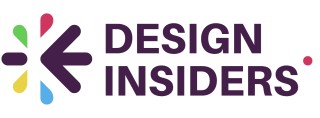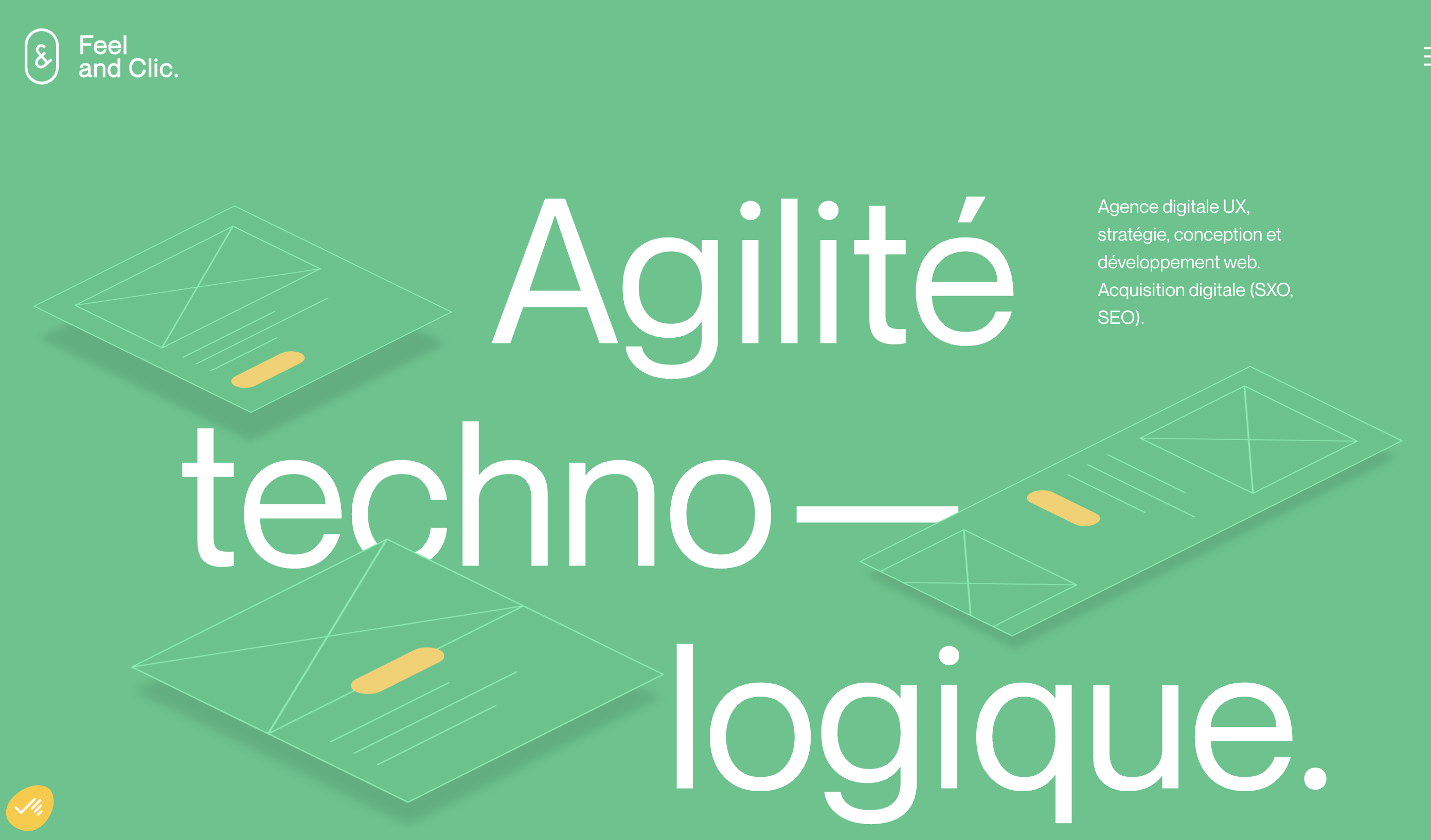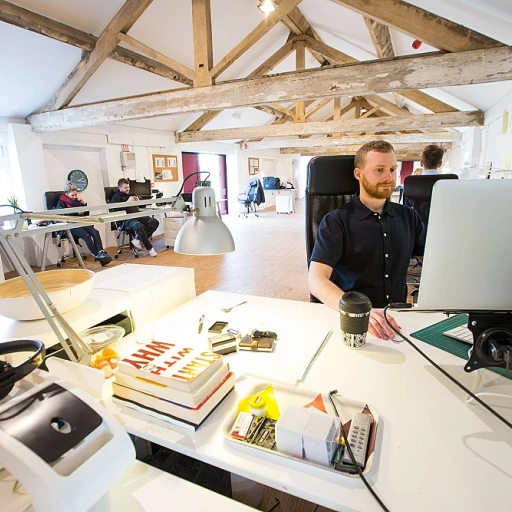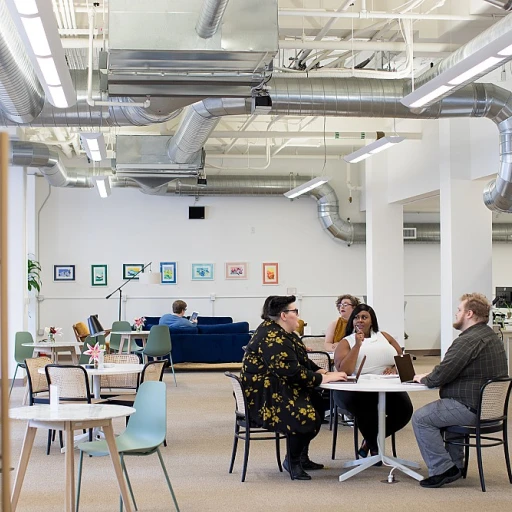
Understanding Interactive Prototyping
Grasping the Core of Interactive Prototyping
Interactive prototyping—it’s where design comes alive. But what's beneath this captivating process? It's about creating a working model of your digital product, be it a web or mobile app, that's designed to interact with users. Think of it as a tool where design meets function, allowing user journeys to be experienced rather than imagined. Interactive prototypes aren't to be confused with static wireframes. These lively versions are developed with intentional user interaction in mind. From clicks to swipes, they mimic the user's experience with the digital product, adding depth and reality to your design process. Whether they're high fidelity mockups or low fidelity sketches, they act as bridges to the final product. For a designer, incorporating interactive prototyping means more than just putting ideas on a screen. It paves the way for invaluable user feedback which is essential to refining a product's usability and functionality. By using interactive prototypes, designers gain the ability to tweak and perfect features based on actual user experience, fostering a more robust development process. Prototyping tools like Figma and Adobe offer designers an arsenal of options to create immersive prototypes. They equip you with the capacity to simulate everything from simple interactions to complex multi-step flows, promoting efficiency and creativity. By facilitating early usability testing, they help predict issues prior to development, reducing risks and costs. A seasoned designer once shared how unlocking the power of interactive prototyping changed their entire approach to product design. By embracing a methodology that prioritizes user interaction, they not only improved user experience but also aligned the development process with real-world expectations. For more on achieving revolutionary user experiences via design strategies, check out this insightful post on interactive design and artificial intelligence synergy.Benefits of Interactive Prototyping
Exploring the Advantages of Interactive Prototyping
Interactive prototyping isn't just a buzzword in the design world. It's a game-changer for how ideas transform into reality. It offers numerous benefits that help enhance user experience (UX) and keeps the design process efficient and enjoyable.- Engagement and Feedback: Unlike static designs, interactive prototypes allow designers to create engaging, clickable models that users can interact with, giving immediate feedback. This hands-on experience helps creators refine the product based on real users' reactions.
- Clarity and Communication: Interactive prototypes provide a tangible representation of the final product, making it easier for stakeholders to understand and provide inputs. This ensures everyone is on the same page, reducing miscommunication and enhancing collaboration.
- Cost and Time Efficiency: By catching usability issues early in the development phase, interactive prototypes save time and money. They allow designers to test different versions quickly without the need for coding, making changes more agile and less cumbersome.
- Improved User Satisfaction: Early usability testing with interactive prototypes helps designers cater to user preferences from the beginning. Assessments through low fidelity or high fidelity prototypes ensure UX aligns with user expectations, boosting satisfaction.
- Realistic User Testing: Compared to static designs, interactive prototypes offer a more realistic environment for user testing. This mimics the final product, giving designers authentic insights into user interactions and behavior.
Popular Tools for Interactive Prototyping
Explore Leading Prototyping Tools
Designers today have a smorgasbord of options to choose from when it comes to creating interactive prototypes. Thanks to the whirlwind of technological advancements, there’s a tool tailored for any type of project, whether you’re working on a high-fidelity app prototype or crafting a digital product with basic wireframes. Among the popular go-to choices are Figma and Adobe XD. These tools excel in providing robust features that allow designers to work collaboratively in real-time, no matter where team members are located. Figma, for instance, has become synonymous with web and mobile interface design due to its intuitive user interface and capability to seamlessly transition from low fidelity wireframes to high fidelity prototypes. Adobe XD, on the other hand, brings the power of Adobe's ecosystem, offering seamless integrations with Photoshop and Illustrator. This can be a game-changer for designers who regularly work across different creative platforms. Adobe XD's niche lies in its ability to link user flows with comprehensive usability testing tools, fostering better user experience design. If you’re invested in design based on a more traditional prototyping path, tools like Axure RP and InVision may pique your interest. Axure RP is known for its ability to create complex prototypes that include conditional logic and dynamic content, catering to those who need high fidelity, interactive prototypes. Meanwhile, InVision offers a visually rich platform with features that masterfully add interactivity to static designs, making it simpler to convey how the final product will operate. Choosing the right prototyping tool ultimately hinges on your project's requirements and team’s preferences. Each tool mentioned here has its strengths and specifications, and selecting the ideal one can define how seamless your design process will be. For more context on how these tools complement other interactive design innovations, you might find it interesting to read more about the artificial intelligence to enhance interactive design. This could offer additional insights into pairing prototyping tools with other tech innovations.Best Practices in Interactive Prototyping
Crafting Your Interactive Prototypes with Purpose
Creating interactive prototypes is more than just a step in the design process. It's where your ideas start to take shape and come alive. The goal is to build a prototype that not only looks good but also functions well, providing a seamless user experience. Here’s how you can make the most out of your prototyping efforts:
Start with Low Fidelity
Before jumping into high fidelity, begin with low fidelity prototypes. These are quick sketches or wireframes that help you outline the basic structure and flow of your product. They are perfect for brainstorming and early feedback. Low fidelity prototypes save time and allow for rapid iterations without getting bogged down in details.
Move to High Fidelity
Once you have a solid foundation, it's time to create high fidelity prototypes. These are more detailed and closer to the final product. They include colors, typography, and even animations, giving a real feel of the user experience. High fidelity prototypes are excellent for usability testing and getting a sense of how users will interact with the product.
Use the Right Tools
Choosing the right prototyping tools is crucial. Tools like Figma and Adobe XD are popular for their ease of use and robust features. They allow designers to create interactive prototypes with clickable elements and transitions, making it easier to visualize the final product.
Incorporate User Feedback
Feedback is gold. Once your interactive prototype is ready, share it with users and stakeholders. Gather their input and be prepared to make changes. This iterative process helps refine the design and ensures the final product meets user expectations.
Test, Test, Test
Usability testing is a must. It reveals how users interact with your prototype and highlights areas for improvement. Testing helps in identifying any usability issues before the product goes live, saving time and resources in the long run.
Keep It Simple
While it’s tempting to add every feature imaginable, simplicity often wins. Focus on the core functionalities that provide the most value to the user. A clutter-free interface enhances the user experience and makes the product more intuitive.
By following these practices, you’ll be well on your way to creating interactive prototypes that not only look great but also provide a smooth and enjoyable user experience.
Challenges in Interactive Prototyping
Overcoming Hurdles in Interactive Prototyping
Creating interactive prototypes can be a thrilling ride, but it’s not without its bumps. Let’s take a look at some of the common challenges designers face when they’re knee-deep in prototyping.
Balancing Fidelity and Flexibility
One of the first hurdles is finding the sweet spot between fidelity and flexibility. High fidelity prototypes offer a realistic glimpse into the final product, but they can be time-consuming and rigid. On the flip side, low fidelity prototypes allow for quick changes but might not capture the user experience in its entirety. Striking the right balance is crucial, as it can make or break the design process.
Choosing the Right Tools
With a plethora of prototyping tools like Figma and Adobe XD, picking the right one can feel like choosing a needle in a haystack. Each tool has its strengths and weaknesses, and the decision often boils down to the specific needs of your project. Some tools excel in creating interactive prototypes for web and mobile apps, while others might be better suited for digital product design. It’s all about matching the tool to the task.
Incorporating User Feedback
Feedback is the lifeblood of any design process, yet integrating it effectively into interactive prototyping can be a challenge. It’s not just about gathering feedback; it’s about making sure it’s actionable and timely. Designers need to create a loop where user insights are continuously fed back into the design, ensuring that the final product aligns with user expectations.
Managing Time and Resources
Time is often in short supply, and resources can be stretched thin. Interactive prototyping requires both, and managing them effectively is a skill in itself. Designers must prioritize tasks and allocate resources wisely to keep the project on track without sacrificing quality.
Ensuring Usability Testing
Usability testing is a cornerstone of interactive prototyping, yet it’s often overlooked or underutilized. The challenge lies in setting up tests that are both comprehensive and efficient, providing insights that can be directly applied to improve the prototype. This requires careful planning and execution to ensure that the final product is user-friendly and meets the intended goals.
These challenges are just part of the journey in interactive prototyping. By understanding and addressing them head-on, designers can create prototypes that not only look great but also deliver an exceptional user experience.










-large-teaser.webp)



